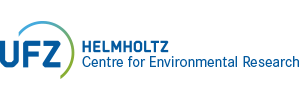Publication Details |
| Category | Text Publication |
| Reference Category | Journals |
| DOI | 10.1002/oik.11103 |
Licence  |
|
| Title (Primary) | Resource inequality limits transfer of nutrients from soils to plants in experimental grassland |
| Author | Bönisch, E.; Eisenhauer, N.; Bassi, L.; Auge, H.
|
| Source Titel | Oikos |
| Year | 2025 |
| Department | BZF; BOOEK; iDiv |
| Volume | 2025 |
| Issue | 10 |
| Page From | e11103 |
| Language | englisch |
| Topic | T5 Future Landscapes |
| Data and Software links | https://doi.org/10.25829/idiv.3576-hskx59 |
| Supplements | Supplement 1 |
| Keywords | Ecosystem functioning, ecotron, Gini coefficient, grassland, nutrient dynamics, resource inequality |
| Abstract | A system's functioning is influenced not only by resource availability but also, likely, by resource inequality. In ecological systems most experimental manipulations of resource availability typically focused on homogeneous resource addition, or spatial heterogeneity of resources in a qualitative sense. Here, we test whether resource inequality per se influences the diversity and functioning of model grassland communities in an Ecotron experiment. Specifically, we experimentally manipulated resource area and concentration (two quantitative components of heterogeneity) to create an inequality gradient quantified by the Gini coefficient. Moreover, we examine whether the association with mycorrhizal fungi can mediate the influence of resource inequality on nutrient dynamics between soils, plants and leachate. We show that resource inequality significantly increased phosphorus leaching and reduced plant phosphorus pools aboveground. Some plant species were more sensitive to inequality than others, as there were shifts in the relative dominance of the two species that produced the most biomass (Plantago lanceolata and Holcus lanatus). Taken together, shifts in plant community composition may provide cues that indicate changes in nutrient dynamics; even though overall plant biomass was not affected, and plant diversity showed a significant decline only during the first phase of the experiment. The enrichment with mycorrhiza did not significantly influence plant biomass and diversity or nutrient concentrations above- and belowground. These results demonstrate that inequality is an essential component in ecological systems determining nutrient availability for plants as well as nutrient use efficiency of plants. An important implication is that spatial inequality of resources in natural landscapes may alter community compositions and predictions of phosphorus uptake that are based on resource input alone. |
| Persistent UFZ Identifier | https://www.ufz.de/index.php?en=20939&ufzPublicationIdentifier=31025 |
| Bönisch, E., Eisenhauer, N., Bassi, L., Auge, H., Friedlein, H., Gleixner, G., Weller, L.-F., Guerrero-Ramírez, N., Reitz, T., Richter, R., Schädler, M., Hines, J. (2025): Resource inequality limits transfer of nutrients from soils to plants in experimental grassland Oikos 2025 (10), e11103 10.1002/oik.11103 |
|
